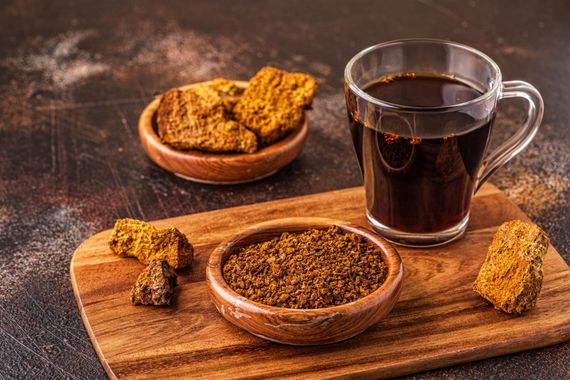Although this mushroom is highly popular among some individuals in the far northern hemisphere, it has yet to find its way into mainstream society.
This fungus is circumpolar, meaning it grows all over the world in its chosen habitat. It reproduces by spores and feeds on organic debris, and it thrives on birch trees in northern climes such as Canada, Alaska, Sweden, and Russia. During reproduction, chaga spores float through the air, seeking to settle on an open wound of a birch tree; bugs and squirrels nibbling on branches for sap or damaged branches produce the wounds the spores require.
If the spores successfully fall on an appropriate location, they penetrate the tree and slowly spread throughout the wood, a process that can take up to 80 years until the Chaga kills its host tree. When the host tree dies, the Chaga mushroom will use the interior of the tree to produce fruiting bodies, which will then disseminate additional spores into the surrounding forests.
The mycelium, which is a network of vegetative fungal growth rather than sexual fungal development, is the portion of the Chaga that is ingested. The wood and leaves of an apple tree would be analogous to mycelium, and the apples would be analogous to the mushroom’s fruiting portion.
Chaga mycelium shows as an unnatural growth on the outside of the birch tree, which develops hard and dense; it is black on the surface and orange on the inside. As mycelium development emerges long before the fungus destroys the tree, a single birch tree can yield Chaga for decades. Chaga is hand-harvested in the wild, and great care is used while picking from the side of the birch to ensure minimal tree harm.
By centuries old traditional remedies, chaga is considered to have significant healing power, and it is frequently referred to as black gold. There have been no human clinical trials published to far, but there has been an increase in scientific study into this fungus in recent decades, and there are now hundreds of animal and human cancer cell studies utilising Chaga that have yielded encouraging results.
Chaga has been proven to lower glucose levels in diabetic mice’s blood. Regular use of a fermented combination has been found to reduce body weight growth in mice fed high fat diets. Both of these results might be useful, as one in every three Americans is expected to be prediabetic or diabetic by 2050.
Chaga is a surprisingly good source of antioxidants that combat inflammation; by weight, it can have up to 150 times the amount found in blueberries. However, I would rather eat a nice dish of blueberries than a cup of woody fungus. The fungus is also said to be an efficient antibacterial, anti-inflammatory, and aid in the treatment of stomach ulcers.
Chaga has recently been proven to be effective in killing human lung cancer cells while leaving healthy normal cells alone; and additional research have revealed comparable anti-cancer effects against leukaemia, colon, and cervical malignancies.
Evidence also suggests that Chaga can help to boost immune systems in mice, which may be beneficial for cancer patients receiving chemotherapy who have compromised immune systems owing to the severity of the medication.
Extract CHAGA For Oral Intake
Chaga is not bioactive in its natural condition, and it is as hard as wood and can grow to be the size of a baseball. As such, it is frequently broken into peppercorn-sized bits and steeped as tea. To enjoy medicinal benefits, it must be boiled for at least 15 minutes.
Other techniques include alcohol extraction, which can remove all water-soluble chemicals and provide a more potent treatment. Fermentation with bacteria is a more difficult technique of turning this fungus into medication; nevertheless, research on this process is still in its early stages but shows promise.
Chaga is also offered in a variety of formats, including tea, powders for smoothies, tinctures, and as a component combined in with other medicinal fungi. Chaga is even sold in coffee by one business.
Don’t be shocked if you see more of Chaga in the coming years, since research shows significant promise.
Note : This article is not intended to provide medical diagnosis, advice, treatment, or endorsement.
https://www.cdc.gov/media/pressrel/2010/r101022.html























